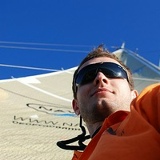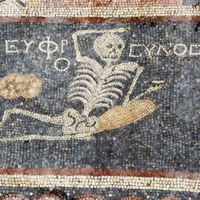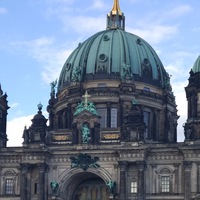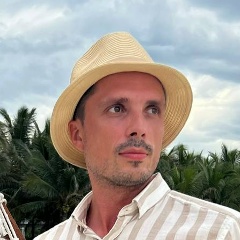Этот пост для [id24305906|Юли], которая дала тему «расстояние».
Есть ли в Эстонии объекты Всемирного наследия ЮНЕСКО?
Есть. Таких всего два.
Первый очевиден. Для многих туристов знакомство с Эстонией этим объектом ЮНЕСКО и ограничивается. Часто люди вообще не могут сказать, есть ли в Эстонии что-то еще кроме, так как в принципе выходные можно отлично провести и не выбираясь куда-то за пределы треугольника из любимого бара, сувенирки и смотровой площадки. Даже на этикетке главного алкогольного сувенира из Эстонии мы видим его. Речь, конечно, о Старом городе Таллинна, который, полагаю, в дополнительных комментариях не нуждается.
Второй же объект, напротив, абсолютно не очевиден. Скажу больше, его вообще невозможно увидеть. Нельзя встать напротив и сфотографировать. Он огромный, да, но погулять по нему тоже не получится. ;) И в моем личном рейтинге это один из самых оригинальных объектов из списка ЮНЕСКО. Называется он — дуга Струве.
Кто такой был Струве? Это был русско-немецкий ученый, астроном, который жил в первой половине XIX века, для нас также интересно и важно, что он был основателем Пулковской обсерватории (1839), но это было далеко не сразу, сначала он работал как раз в Эстонии, в Тарту. Не очень понятно, как мне его вам представить, потому что по рождению его звали Фридрих Георг Вильгельм, но в России он уже стал Василий Яковлевич. Так его разные источники и называют — то Вильгельмом, то Василием. Но это неважно. В общем, родился Струве в Гамбурге, но приехал учиться в Россию, а точнее в Тартуский (тогда Дерптский) университет. Поступил на филологию (привет, бро!) и даже защитил диплом, но в 1807 году в небе пронеслась Большая комета и, не ведая того, переопределила профессиональные интересы молодого ученого на всю оставшуюся жизнь — он стал астрономом. Очень долгое время он работал в Тартуской (Дерптской) обсерватории, пока не основал новую — в Санкт-Петербурге.
Дуга Струве была масштабным проектом, который ставил себе задачу ответить на простой и незатейливый вопрос: каков диаметр Земли? Сейчас ответ на него каждый из нас найдет в гугле за секунду. Чтобы примерно ответить на него в начале XIX века (в отсутствие интернета и спутников) Струве и его коллегам понадобилось 40 лет интенсивной работы (1816—1855). К сожалению, я не разбираюсь в геодезии, поэтому мне довольно сложно описывать суть проекта. В общем, дуга Струве — это 265 геодезических пунктов (ряд конкретных точек, отмеченных на карте и на земле, в реальности это были просто кубы), расположенных вдоль меридиана, проходящего через Тартускую обсерваторию. Эти 265 пунктов составляют 258 треугольников, с помощью которых можно измерить кусок меридиана (а по куску меридиана и всю остальную окружность тоже).
Струве повезло жить и работать в стране, где размер территории действительно позволял провести эти геодезические работы. Современная карта мира выглядит так, что дуга Струве является объектом ЮНЕСКО 10 стран (Норвегия, Швеция, Финляндия, Россия, Эстония, Латвия, Литва, Беларусь, Украина, Молдавия) — тогда большая часть дуги проходила по Российской Империи. Длина дуги 2820 км (1/14 окружности Земли). Несколько десятилетий работы ученых Петербургской академии наук. По итогам проекта в 1854 г. Струве вывел наиболее вероятные размеры Земли. Точность измерений оказалась довольно высокой: современные спутники показали погрешность всего лишь 2 см. Кроме того, дуга Струве служила еще больше ста лет для проведения навигационных и картографических работ. В общем, не изобрети человечество спутники, быть может, и до сих пор бы служила.
Разумеется, не все геодезические пункты сохранились до нашего времени. Три пункта, тем не менее, есть на территории Эстонии. Один из них — собственно Тартуская обсерватория, где сейчас находится памятный знак. Как по мне, дуга Струве и весь этот проект — это потрясающий памятник упорству, любопытству и усилиям ученых доспутниковой, доинформационной, доинтернетной поры. И еще один повод задуматься, насколько легко каждый из нас сейчас может получить информацию о том, что еще пару веков назад было недоступно в буквальном смысле никому.
P.S. Это не имеет отношения к научным заслугам Струве, но меня отдельно поразил факт, что у Струве было 18 детей. В 1815 году он женился в первый раз, и его жена за 19 лет брака родила ему 12 детей (4 умерло, не достигнув совершеннолетия), а потом умерла. Ей было 38 лет. В тот же год он женился снова, и вторая жена родила еще шестерых. Многие дети пошли по стопам отца и стали выдающимися учеными (по крайней мере, о них есть статьи в Википедии! ;)), т.е. нельзя сказать, что они росли, как трава. Как это у людей раньше вот так получалось, а? :)
https://i1.wp.com/www.racurs.ru/wiki/images/a/a0/%D0%93%D0%94%D0%A1-5.jpg
https://media-cdn.tripadvisor.com/media/photo-s/06/d3/32/9b/struve-s-geodetic-arch.jpg
https://www.ut.ee/sites/default/files/styles/ut_content_width/public/friedrich_georg_wilhelm_von_struve_3.jpg?itok=q_wIAqkU
#estonian_challenge
Есть ли в Эстонии объекты Всемирного наследия ЮНЕСКО?
Есть. Таких всего два.
Первый очевиден. Для многих туристов знакомство с Эстонией этим объектом ЮНЕСКО и ограничивается. Часто люди вообще не могут сказать, есть ли в Эстонии что-то еще кроме, так как в принципе выходные можно отлично провести и не выбираясь куда-то за пределы треугольника из любимого бара, сувенирки и смотровой площадки. Даже на этикетке главного алкогольного сувенира из Эстонии мы видим его. Речь, конечно, о Старом городе Таллинна, который, полагаю, в дополнительных комментариях не нуждается.
Второй же объект, напротив, абсолютно не очевиден. Скажу больше, его вообще невозможно увидеть. Нельзя встать напротив и сфотографировать. Он огромный, да, но погулять по нему тоже не получится. ;) И в моем личном рейтинге это один из самых оригинальных объектов из списка ЮНЕСКО. Называется он — дуга Струве.
Кто такой был Струве? Это был русско-немецкий ученый, астроном, который жил в первой половине XIX века, для нас также интересно и важно, что он был основателем Пулковской обсерватории (1839), но это было далеко не сразу, сначала он работал как раз в Эстонии, в Тарту. Не очень понятно, как мне его вам представить, потому что по рождению его звали Фридрих Георг Вильгельм, но в России он уже стал Василий Яковлевич. Так его разные источники и называют — то Вильгельмом, то Василием. Но это неважно. В общем, родился Струве в Гамбурге, но приехал учиться в Россию, а точнее в Тартуский (тогда Дерптский) университет. Поступил на филологию (привет, бро!) и даже защитил диплом, но в 1807 году в небе пронеслась Большая комета и, не ведая того, переопределила профессиональные интересы молодого ученого на всю оставшуюся жизнь — он стал астрономом. Очень долгое время он работал в Тартуской (Дерптской) обсерватории, пока не основал новую — в Санкт-Петербурге.
Дуга Струве была масштабным проектом, который ставил себе задачу ответить на простой и незатейливый вопрос: каков диаметр Земли? Сейчас ответ на него каждый из нас найдет в гугле за секунду. Чтобы примерно ответить на него в начале XIX века (в отсутствие интернета и спутников) Струве и его коллегам понадобилось 40 лет интенсивной работы (1816—1855). К сожалению, я не разбираюсь в геодезии, поэтому мне довольно сложно описывать суть проекта. В общем, дуга Струве — это 265 геодезических пунктов (ряд конкретных точек, отмеченных на карте и на земле, в реальности это были просто кубы), расположенных вдоль меридиана, проходящего через Тартускую обсерваторию. Эти 265 пунктов составляют 258 треугольников, с помощью которых можно измерить кусок меридиана (а по куску меридиана и всю остальную окружность тоже).
Струве повезло жить и работать в стране, где размер территории действительно позволял провести эти геодезические работы. Современная карта мира выглядит так, что дуга Струве является объектом ЮНЕСКО 10 стран (Норвегия, Швеция, Финляндия, Россия, Эстония, Латвия, Литва, Беларусь, Украина, Молдавия) — тогда большая часть дуги проходила по Российской Империи. Длина дуги 2820 км (1/14 окружности Земли). Несколько десятилетий работы ученых Петербургской академии наук. По итогам проекта в 1854 г. Струве вывел наиболее вероятные размеры Земли. Точность измерений оказалась довольно высокой: современные спутники показали погрешность всего лишь 2 см. Кроме того, дуга Струве служила еще больше ста лет для проведения навигационных и картографических работ. В общем, не изобрети человечество спутники, быть может, и до сих пор бы служила.
Разумеется, не все геодезические пункты сохранились до нашего времени. Три пункта, тем не менее, есть на территории Эстонии. Один из них — собственно Тартуская обсерватория, где сейчас находится памятный знак. Как по мне, дуга Струве и весь этот проект — это потрясающий памятник упорству, любопытству и усилиям ученых доспутниковой, доинформационной, доинтернетной поры. И еще один повод задуматься, насколько легко каждый из нас сейчас может получить информацию о том, что еще пару веков назад было недоступно в буквальном смысле никому.
P.S. Это не имеет отношения к научным заслугам Струве, но меня отдельно поразил факт, что у Струве было 18 детей. В 1815 году он женился в первый раз, и его жена за 19 лет брака родила ему 12 детей (4 умерло, не достигнув совершеннолетия), а потом умерла. Ей было 38 лет. В тот же год он женился снова, и вторая жена родила еще шестерых. Многие дети пошли по стопам отца и стали выдающимися учеными (по крайней мере, о них есть статьи в Википедии! ;)), т.е. нельзя сказать, что они росли, как трава. Как это у людей раньше вот так получалось, а? :)
https://i1.wp.com/www.racurs.ru/wiki/images/a/a0/%D0%93%D0%94%D0%A1-5.jpg
https://media-cdn.tripadvisor.com/media/photo-s/06/d3/32/9b/struve-s-geodetic-arch.jpg
https://www.ut.ee/sites/default/files/styles/ut_content_width/public/friedrich_georg_wilhelm_von_struve_3.jpg?itok=q_wIAqkU
#estonian_challenge
This post is for [id24305906 | Yuli], which gave the subject of "distance".
Are there any UNESCO World Heritage Sites in Estonia?
There is. There are only two.
The first is obvious. For many tourists, exploring Estonia is limited to this UNESCO site. Often, people generally cannot say whether there is anything else in Estonia, since, in principle, you can have a great weekend without getting somewhere outside the triangle from your favorite bar, souvenir and observation deck. Even on the label of the main alcoholic souvenir from Estonia, we see it. This, of course, is about the Old Town of Tallinn, which, I believe, does not need additional comments.
The second object, on the contrary, is absolutely not obvious. I will say more, it is generally impossible to see. You can not stand in front and take pictures. He is huge, yes, but walking on it, too, will not work. ;) And in my personal rating this is one of the most original objects on the UNESCO list. It is called the Struve arc.
Who was Struve? It was a Russian-German scientist, an astronomer who lived in the first half of the XIX century, it is also interesting and important for us that he was the founder of the Pulkovo Observatory (1839), but this was not immediately, at first he worked just in Estonia, Tartu. It is not very clear how I can present it to you, because by birth his name was Friedrich Georg Wilhelm, but in Russia he already became Vasily Yakovlevich. So its different sources are called Wilhelm, or Basil. But it is not important. In general, Struve was born in Hamburg, but he came to study in Russia, and more precisely to the University of Tartu (then Dorpat). He entered philology (hello, bro!) And even defended his diploma, but in 1807 a large comet flashed through the sky and, unknowingly, redefined the young scientist's professional interests for the rest of his life - he became an astronomer. For a very long time, he worked at the Tartu (Derpt) Observatory, until he founded a new one - in St. Petersburg.
Doug Struve was a large-scale project that set itself the task of answering a simple and simple question: what is the diameter of the Earth? Now the answer to it, each of us will find in Google for a second. In order to roughly answer it at the beginning of the 19th century (in the absence of the Internet and satellites), Struve and his colleagues took 40 years of intensive work (1816–1855). Unfortunately, I do not understand geodesy, so it is quite difficult for me to describe the essence of the project. In general, the Struve arc is 265 geodetic points (a number of specific points marked on the map and on the ground, in reality, they were just cubes), located along the meridian passing through the Tartu Observatory. These 265 points make up 258 triangles, with the help of which you can measure a piece of the meridian (and a piece of the meridian and the rest of the circle too).
Struve was lucky to live and work in a country where the size of the territory really allowed for this geodesic work. The modern world map looks like the Struve arc is a UNESCO object from 10 countries (Norway, Sweden, Finland, Russia, Estonia, Latvia, Lithuania, Belarus, Ukraine, Moldova) - then most of the arc passed through the Russian Empire. The arc length is 2820 km (1/14 of the circumference of the Earth). Several decades of work of scientists of the St. Petersburg Academy of Sciences. According to the results of the project in 1854, Struve derived the most probable dimensions of the Earth. The accuracy of the measurements turned out to be quite high: modern satellites showed an error of only 2 cm. In addition, the Struve arc served even more than a hundred years for navigation and cartographic work. In general, without inventing satellites for mankind, perhaps it would have served until now.
Of course, not all survey points have survived to our time. Three points, however, are in Estonia. One of them is the Tartu Observatory itself, where the memorial is now located. As for me, the Struve arc and this whole project are a terrific monument to the perseverance, curiosity and efforts of the scientists of the satellite, pre-information, pre-Internet time. And one more reason to think about how easily each of us can now receive information that a couple of centuries ago was literally inaccessible to anyone.
P.S. This is not related to the scientific merit of Struve, but I was separately struck by the fact that Struve had 18 children. In 1815, he married for the first time, and his wife, in 19 years of marriage, bore him 12 children (4 died before reaching adulthood), and then she died. She was 38 years old. In the same year he married again, and the second wife gave birth to six more. Many children followed in the footsteps of their father and became outstanding scientists (at least there are articles on Wikipedia about them!;)), I.e. it cannot be said that they grew like grass. How did people do this before, eh? :)
https://i1.wp.com/www.racurs.ru/wiki/images/a/a0/%D0%93% D0% 94% D0% A1-5.jpg
https://media-cdn.tripadvisor.com/media/photo-s/06/d3/32/9b/struve-s-geodetic-arch.jpg
https://www.ut.ee/sites/default/files/styles/ut_content_width/public/friedrich_georg_wilhelm_von_struve_3.jpg?itok=q_wIAqkU
#estonian_challenge
Are there any UNESCO World Heritage Sites in Estonia?
There is. There are only two.
The first is obvious. For many tourists, exploring Estonia is limited to this UNESCO site. Often, people generally cannot say whether there is anything else in Estonia, since, in principle, you can have a great weekend without getting somewhere outside the triangle from your favorite bar, souvenir and observation deck. Even on the label of the main alcoholic souvenir from Estonia, we see it. This, of course, is about the Old Town of Tallinn, which, I believe, does not need additional comments.
The second object, on the contrary, is absolutely not obvious. I will say more, it is generally impossible to see. You can not stand in front and take pictures. He is huge, yes, but walking on it, too, will not work. ;) And in my personal rating this is one of the most original objects on the UNESCO list. It is called the Struve arc.
Who was Struve? It was a Russian-German scientist, an astronomer who lived in the first half of the XIX century, it is also interesting and important for us that he was the founder of the Pulkovo Observatory (1839), but this was not immediately, at first he worked just in Estonia, Tartu. It is not very clear how I can present it to you, because by birth his name was Friedrich Georg Wilhelm, but in Russia he already became Vasily Yakovlevich. So its different sources are called Wilhelm, or Basil. But it is not important. In general, Struve was born in Hamburg, but he came to study in Russia, and more precisely to the University of Tartu (then Dorpat). He entered philology (hello, bro!) And even defended his diploma, but in 1807 a large comet flashed through the sky and, unknowingly, redefined the young scientist's professional interests for the rest of his life - he became an astronomer. For a very long time, he worked at the Tartu (Derpt) Observatory, until he founded a new one - in St. Petersburg.
Doug Struve was a large-scale project that set itself the task of answering a simple and simple question: what is the diameter of the Earth? Now the answer to it, each of us will find in Google for a second. In order to roughly answer it at the beginning of the 19th century (in the absence of the Internet and satellites), Struve and his colleagues took 40 years of intensive work (1816–1855). Unfortunately, I do not understand geodesy, so it is quite difficult for me to describe the essence of the project. In general, the Struve arc is 265 geodetic points (a number of specific points marked on the map and on the ground, in reality, they were just cubes), located along the meridian passing through the Tartu Observatory. These 265 points make up 258 triangles, with the help of which you can measure a piece of the meridian (and a piece of the meridian and the rest of the circle too).
Struve was lucky to live and work in a country where the size of the territory really allowed for this geodesic work. The modern world map looks like the Struve arc is a UNESCO object from 10 countries (Norway, Sweden, Finland, Russia, Estonia, Latvia, Lithuania, Belarus, Ukraine, Moldova) - then most of the arc passed through the Russian Empire. The arc length is 2820 km (1/14 of the circumference of the Earth). Several decades of work of scientists of the St. Petersburg Academy of Sciences. According to the results of the project in 1854, Struve derived the most probable dimensions of the Earth. The accuracy of the measurements turned out to be quite high: modern satellites showed an error of only 2 cm. In addition, the Struve arc served even more than a hundred years for navigation and cartographic work. In general, without inventing satellites for mankind, perhaps it would have served until now.
Of course, not all survey points have survived to our time. Three points, however, are in Estonia. One of them is the Tartu Observatory itself, where the memorial is now located. As for me, the Struve arc and this whole project are a terrific monument to the perseverance, curiosity and efforts of the scientists of the satellite, pre-information, pre-Internet time. And one more reason to think about how easily each of us can now receive information that a couple of centuries ago was literally inaccessible to anyone.
P.S. This is not related to the scientific merit of Struve, but I was separately struck by the fact that Struve had 18 children. In 1815, he married for the first time, and his wife, in 19 years of marriage, bore him 12 children (4 died before reaching adulthood), and then she died. She was 38 years old. In the same year he married again, and the second wife gave birth to six more. Many children followed in the footsteps of their father and became outstanding scientists (at least there are articles on Wikipedia about them!;)), I.e. it cannot be said that they grew like grass. How did people do this before, eh? :)
https://i1.wp.com/www.racurs.ru/wiki/images/a/a0/%D0%93% D0% 94% D0% A1-5.jpg
https://media-cdn.tripadvisor.com/media/photo-s/06/d3/32/9b/struve-s-geodetic-arch.jpg
https://www.ut.ee/sites/default/files/styles/ut_content_width/public/friedrich_georg_wilhelm_von_struve_3.jpg?itok=q_wIAqkU
#estonian_challenge



У записи 53 лайков,
5 репостов,
2564 просмотров.
5 репостов,
2564 просмотров.
Эту запись оставил(а) на своей стене Полина Оскольская




































































